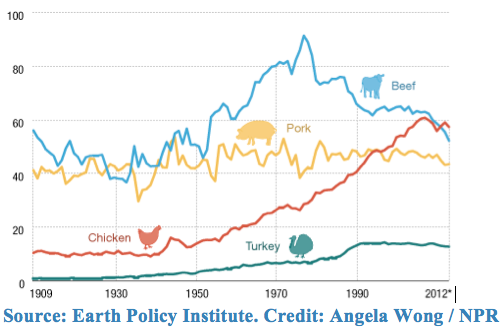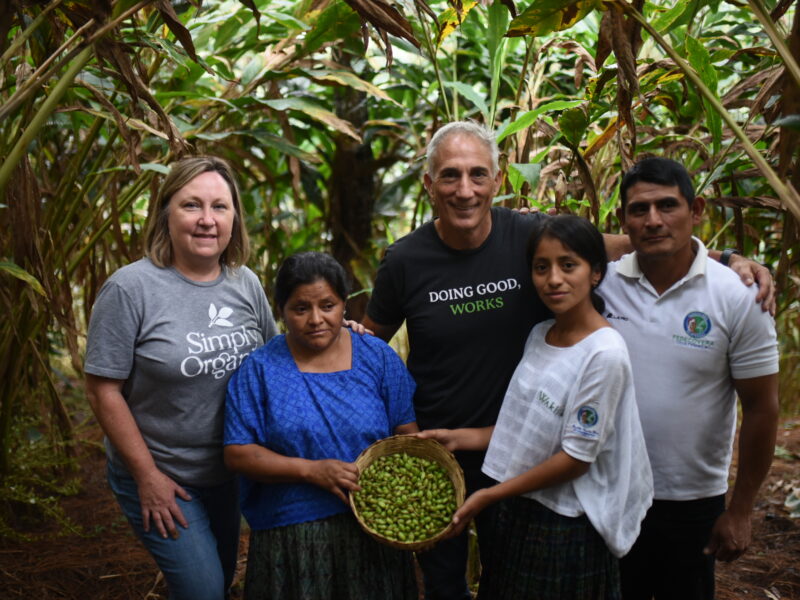By: Connie Rosemont (Only Organic)
The sands are shifting in the world of poultry. This year, for the first time in a century, Americans are eating more chicken than beef. And last month, Perdue, one of the country’s largest purveyors of chicken, announced it had stopped all antibiotic use in its chicken hatcheries. In fact, Perdue claims that today, 95% of their poultry “never have used human antibiotics.”
Behind these two significant industry trends – more chicken sales, less antibiotics -lies a potent mix of science and the power of consumer choice.
When red meat became associated with increased risk of cardiovascular disease in the 1980’s, Americans started switching to white meat.
By 2011, according to the USDA, American farmers raised 8.6 billion conventional broiler chickens for commercial sale.
8.6 Billion?! That is a lot of chicken.
And it doesn’t count those of us who ate only organic chicken: that was another 28 million for 2011. While it is but a drop in the bucket of the 8.6 billion, 28 million broiler chickens represents a 3-fold growth from 2008.
Across the board, Americans have been pushing industry to eliminate antibiotics in their chicken and this is one reason organic chicken has become popular: it is guaranteed to be free of antibiotics.
WHY THERE SHOULDN’T BE ANTIBIOTICS IN MEAT
The overuse of antibiotics in livestock has already caused the development of a drug-resistant e. coli that can move from poultry to people, a risk predicted in the 1970s.
The widespread use of antibiotics to speed growth in livestock has contributed to the development of bacteria known as “superbugs” that have evolved to survive antibiotics designed to kill them, as noted by a Washington Post editorial. The big concern is that if the bugs can do that in animals on a farm, they will do it in humans at the doctor’s office. To be clear, the great majority of antibiotics used are ones for livestock, not humans, but the concern remains.
On September 18, the White House issued an Executive Order laying out priorities to combat antibiotic-resistant bacteria, saying, among other things, that “The Food and Drug Administration (FDA) in coordination with the U.S. Department of Agriculture (USDA), shall continue taking steps to eliminate the use of medically important classes of antibiotics for growth promotion purposes in food-producing animals.”
Unfortunately, a recent Reuters investigative report found that poultry farmers are putting their birds on a steady, low-level diet of antibiotics not to fight disease, but to make the chickens fatten up faster. The average life of a broiler is just six weeks.
The issue of using antibiotics in livestock to promote growth has become one of national importance. And as scientists are finally persuading policymakers, the consumer’s drumbeat can be felt in the market: according to Perdue, getting rid of antibiotics “…takes a lot more effort with more stringent standards, but we believe this is what consumers expect from Perdue.”
ORGANIC CONSUMER CHOICE HAS MADE A DIFFERENCE
With sales of chicken skyrocketing, we can see the power each one of us can wield at the supermarket: the organic shopper’s concerns extend into food production processes and this has had ripple effects in the conventional market. Case in point: Perdue is now the U.S.’s largest supplier of organic chicken!
Yet the road ahead is still long. Just days after the White House order, FDA issued a report saying that between 2009-2012 there has been a 16% increase in all antibiotics used on livestock and that 61% of all drug use in the US has been for farming, not people.
What is the final takeaway? Keep eating organic chicken because 1) it guarantees you get no antibiotics in your food; 2) it puts pressure on the industry to meet changing consumer awareness and updated science.










